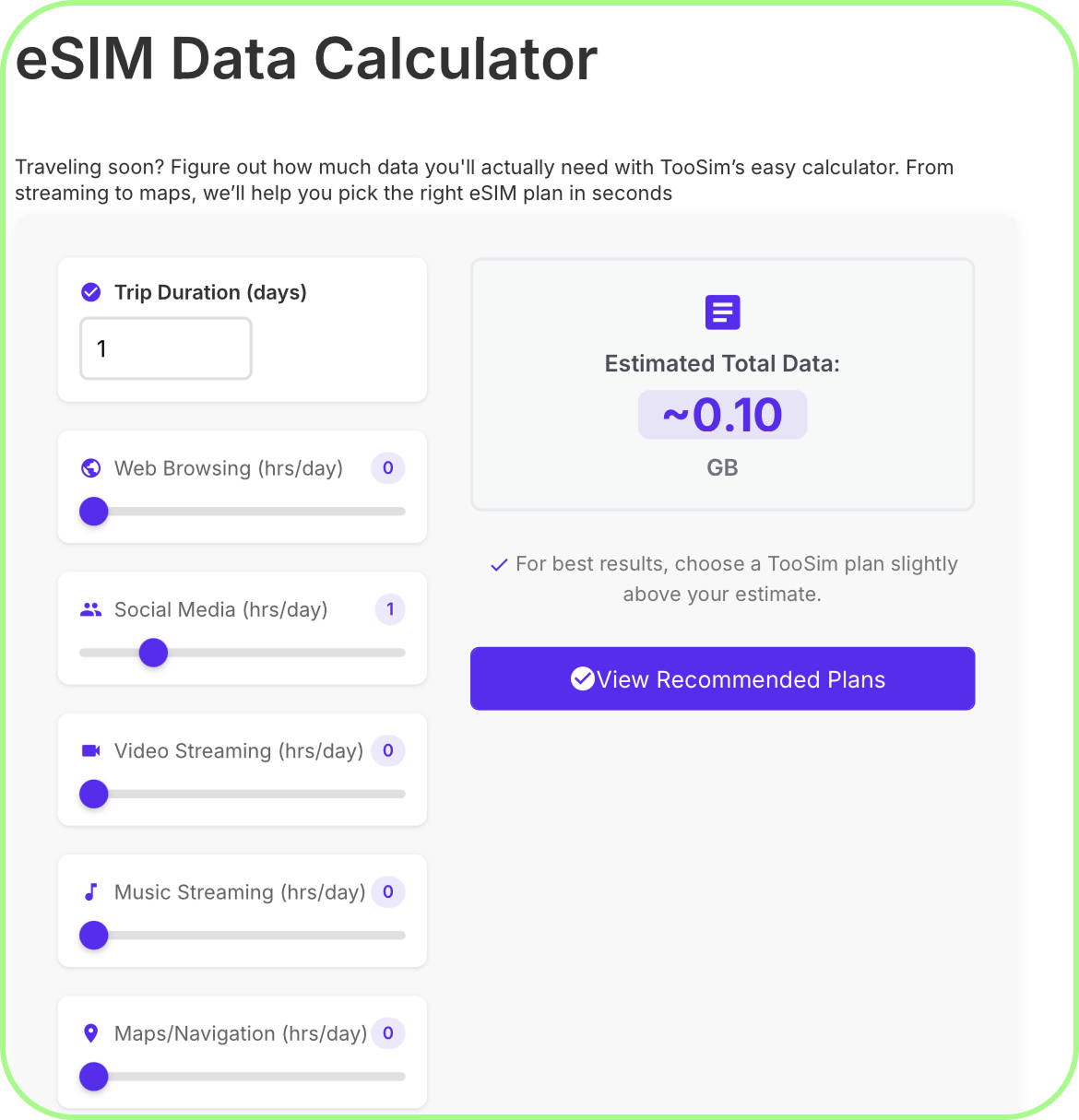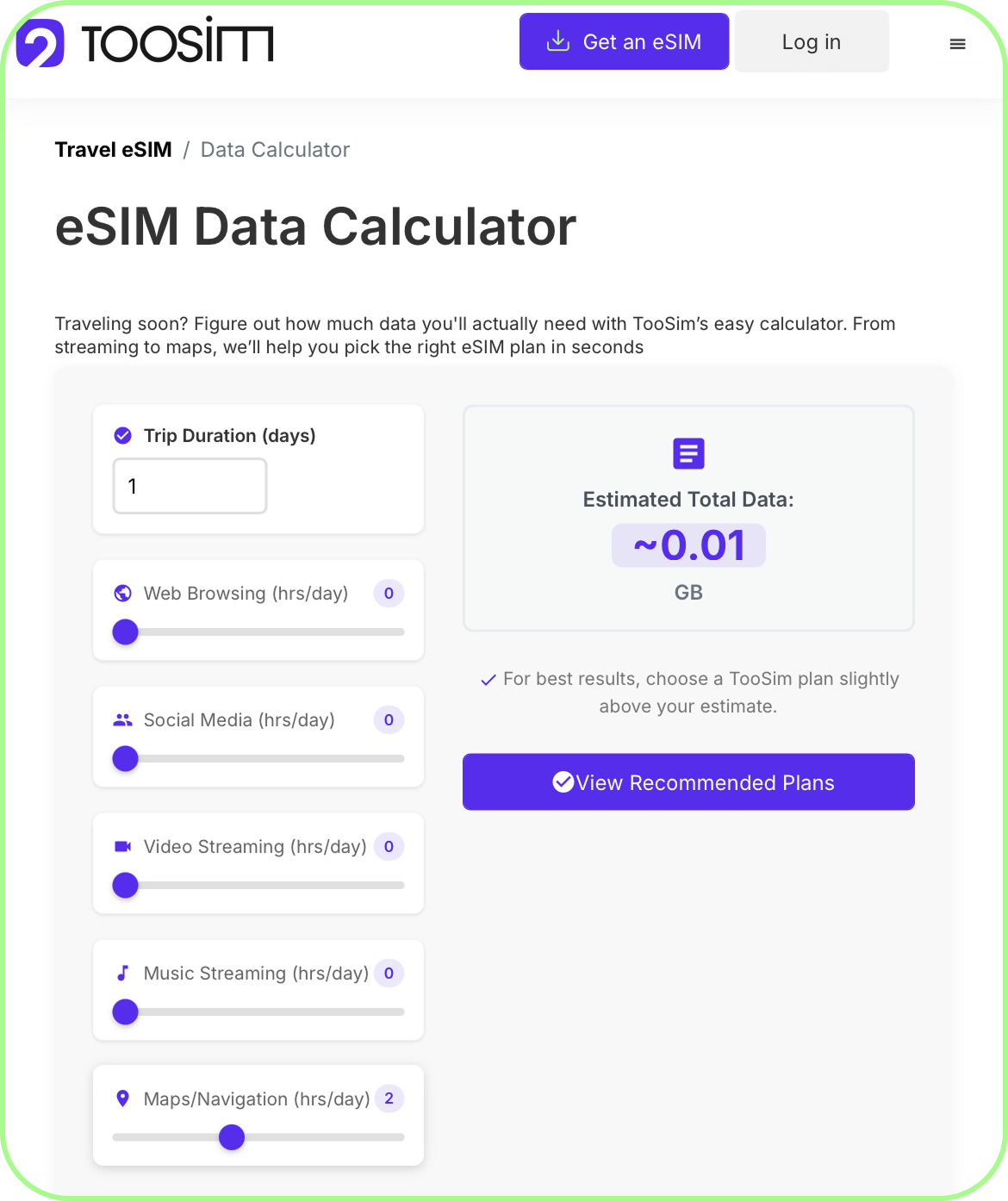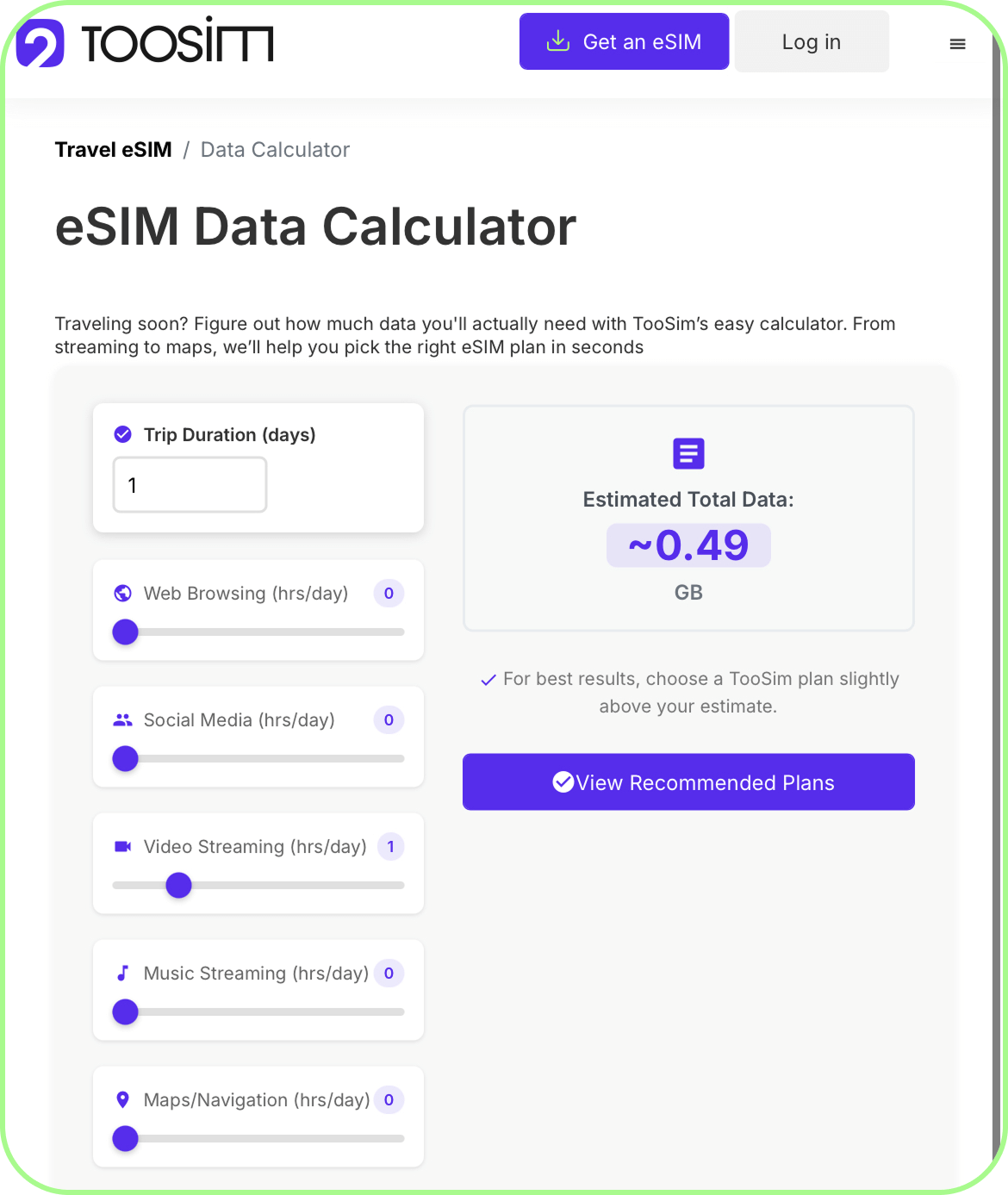Travel eSIM packages can vary widely – from 1 GB to 50 GB. But how much data do you actually need? Let’s break down how much data common activities like social media, video streaming, navigation, and browsing typically consume. This will help you choose the right plan for your trip – whether it's a short getaway or a longer adventure. To make things even easier, check out our TooSIM Data Calculator – a simple online tool that helps you estimate how many gigabytes you’ll need based on your travel habits.
Social Media
Scrolling through social media apps like Instagram, Facebook, TikTok, X (formerly Twitter), and Threads can consume a significant amount of data, but it really depends on the platform and how you're using it (for example, apps like Instagram and TikTok tend to use more data, especially if you're watching videos or uploading content). According to our TooSIM Data Calculator, average light-to-moderate use across all platforms comes out to around 100 MB per hour. But let’s break it down by platform to see how each one stacks up.

Tests conducted among active Instagram users show that data usage averages around 400 MB per hour, but it largely depends on how you use the app:
- Scrolling through the feed uses approximately 100–150 MB/hour.
- Watching Stories and Reels can consume 400–600 MB/hour.
- Uploading content also adds up: around 2–4 MB per photo, approximately 8 MB per video. So uploading 125 videos or 300–350 photos can easily use up 1 GB of data.
If you engage in a mix of activities but limit your time watching Reels, you can expect to use about 100–200 MB/hour. However, if you're constantly watching videos, prepare for 600+ MB/hour.
X (Twitter) and Threads
These are some of the lightest social networks in terms of data usage, with minimal heavy content like images and videos. Average consumption: Twitter – 60 MB/hour, Threads – 50–100 MB/hour.
TikTok, Snapchat
At standard or high video quality, users typically consume around 840–950 MB per hour (roughly 70–100 MB every 5 minutes). However, if you enable "Data Saver" mode on your smartphone, videos will play in lower quality, reducing data usage to about 300–360 MB per hour. Read more about how to enable such data saving in this article.
Keep in mind: downloading videos while browsing social networks also uses data – about 10–15 MB per minute for medium-quality videos and up to 30 MB per minute for high-resolution content.
According to testing, Facebook is considered one of the more data-efficient social networks. On average, users consume around 100–150 MB per hour, as most of the time is spent simply scrolling through the feed. However, actual usage can vary significantly depending on the type of activity:
| Activity Type | Data Usage |
| Feed (text, photos) | ~100–200 MB/hour |
| Video SD (480p) | ~300–500 MB/hour |
| Video HD (720p) | ~600–800 MB/hour |
| Live streaming | ~1–1.5 GB/hour |
| Facebook Lite | ~50–100 MB/hour |
Spotify, Apple Music
These are not heavy data consumers. On average, users use about 40 MB per hour. Even with very active listening, 5 GB of data will last for around 70+ hours. However, data usage can vary slightly depending on the platform.
| Platform | Data Usage (Average Bitrate) |
| Spotify | ~40–70 MB / hour |
| YouTube Music | ~70–120 MB / hour |
| Apple Music | ~80–100 MB / hour |
| Podcasts | ~20–60 MB / hour |
YouTube, Netflix, Disney+
Average usage is about 490 MB per hour. However, with video, much depends on the chosen resolution.

If you watch videos in 1080p or 4K, small data packages won’t be enough – you’ll need 20 or 50 GB plans. However, if you’re fine with low resolutions (from 144p to 360p), you can even occasionally watch full movies with packages of 5 to 15 GB. More details are in the table.
| Video Quality | Estimated Data Usage |
| 144p (Low) | ~100 MB / hour |
| 360p | ~300–400 MB / hour |
| 720p (HD) | ~1 GB / hour |
| 1080p (Full HD) | ~1.5–2 GB / hour |
| 4K (Ultra HD) | ~7–10 GB / hour |
Maps & Navigation
This is one of the most data-efficient options when it comes to traffic usage. On average, travelers use about 10 MB over 2 hours. For a full day of walking around the city, data usage typically ranges from 100 to 200 MB if you actively use the “follow route” feature, rather than just planning the route and navigating on your own.

But you should also consider downloading offline maps of the city or country (Rome, Italy and others). On average, this requires about 50-100 MB per map.
Web Browsing & Messengers
Web browsing isn’t very data-intensive either. On average, users consume about 20 MB per hour when using Google, Safari, or other researchers. That said, data usage varies depending on how you use it:
- Simple searches use around 10 MB per hour;
- Reading articles and browsing websites typically consumes 20-30 MB per hour. However, sites with lots of animations, videos, or heavy images will increase data usage significantly.
Messaging apps can use more data, but mainly if you send audio messages, photos, or make video calls. Plain text messages have almost no impact – about 1 MB per 100 messages. Other activity details are shown in the table.
Conclusions: Which eSIM Package Do You Need?
If you mostly use messengers for text only, do light internet browsing, minimal social media, and rarely watch videos online, a 5 GB package will be sufficient for a trip up to 7 days (and if your daily internet use is just 2–3 hours, even 2–3 GB can work).
Packages between 3 GB and 10 GB are suitable for 14 days, and for a month, 10–20 GB should cover your needs.
If you regularly watch videos on YouTube, Netflix, or social media (Reels, Stories) while also using chats and doing internet searches, then a package of 7–15 GB is recommended for 7 days. For 14 days, consider 10–25 GB, and for a month, 20 or 50 GB will be a better fit.
For heavy users who spend many hours online, frequently watch videos, work remotely, or stream live, the minimum recommended package is 15 GB for 7 days, and 25 GB or more for 14 days.
